Paints are a type of artistic materials used for drawing. They consist of pigment, binder and solvent. The variety of their types allows you to find the perfect palette and express your individuality on canvas or other materials.
Main characteristics
| Property name | Description of the property |
| lightfastness | This is the ability of paint to retain its color and brightness when exposed to light. Lightfast paints do not fade over time, so they are often used to create works that must retain their appearance over time. |
| transparency | Transparent paints allow the artist to create subtle and delicate shades, as well as work with glazes – applying one layer of paint on top of another to obtain new colors. |
| consistency | Thick paints require more intensive application, while thin paints allow you to create thinner and more elegant lines. |
| compound | Watercolor paints, for example, are made from water and pigment. Oil paints, on the other hand, are made from oil, which makes them thicker and richer. |
| water solubility | Water-soluble paints are made from water and pigments. They are easy to apply and wash off with water. They are suitable for creating sketches, drafts and other works that require quick drying. These are watercolor, gouache, acrylic. Tempera also belongs to this category. |
Some paints have special properties, such as fluorescence – the ability to glow in the dark after exposure to ultraviolet light.
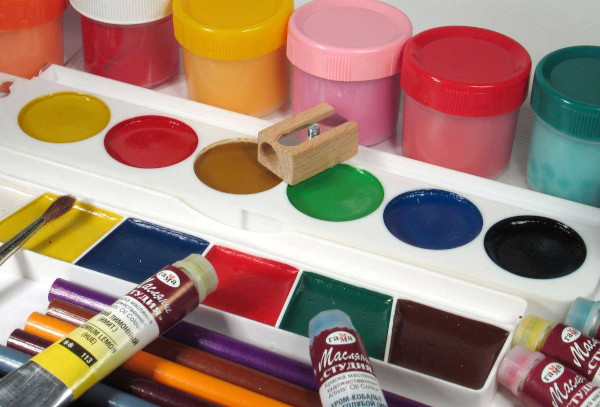
Lightfast and transparent paints are suitable for creating works that will be stored for a long time, and thick and saturated paints can be used to create bright and expressive works.
Watercolor paints
These are artistic paints that can be used to create delicate and transparent shades.
Properties
They have a number of advantages over other types:
- easy to apply to paper or canvas,
- dry quickly;
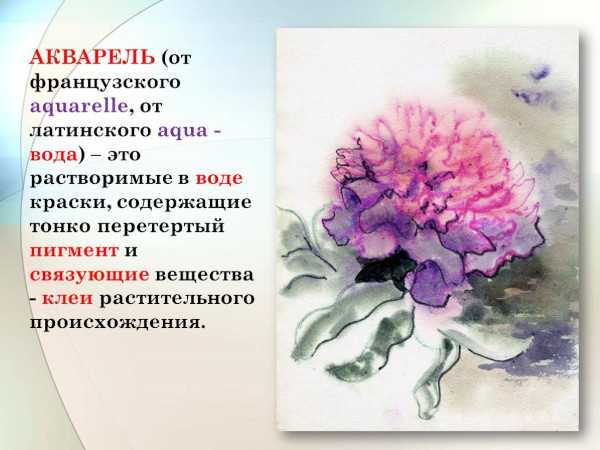
- leave behind a bright and rich color;
- allow you to create smooth transitions between colors and achieve a variety of effects, such as blur, shine and matte.
Types
There are several types of watercolor paints, which differ in composition, properties and purpose.
Semi-solid in cuvettes - dry
These are paints that have a thick consistency and require the use of special tools such as brushes or a palette knife. They are suitable for creating clear and detailed drawings.
Soft ones in tubes
These are paints that have a more liquid consistency and allow you to create smoother and blurrier transitions between colors. They are suitable for creating landscapes, portraits and other paintings.
Liquid
These are paints that have the most liquid consistency and allow you to create the smoothest and most transparent transitions between colors. They are suitable for creating watercolor fills and washes.
"Honey"
These are paints that contain honey as a binder. Honey gives the paints extra viscosity and shine. They are suitable for creating decorative works and illustrations.
Which ones to choose?
- If you need clear and detailed drawings, then semi-hard ones will do.
- For smooth and painterly work, soft or liquid ones are needed.
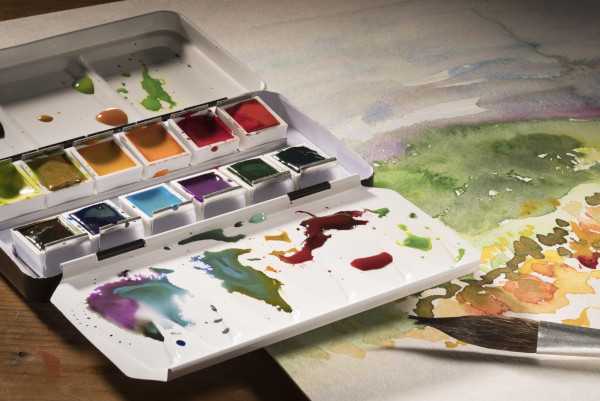
- For decorative works or illustrations, "honey" ones are suitable.
- When choosing, you should consider their manufacturer, price and quality. High-quality paints have bright and saturated colors, good lightfastness and resistance to moisture. Cheaper ones may be less bright and saturated.
Gouache
Paints for drawing, the types of which include gouache, are widely used in fine art due to their brightness, saturation and resistance to light. They are suitable for various drawing techniques, such as glazing, impasto painting and others.
Properties
They have a number of properties that make them attractive to artists:
| Property name | Brief description |
| multifunctionality | They can be used for drawing on paper and cardboard, as well as on wood, fabric and other surfaces. This makes them a universal tool that can be used in various techniques and styles. |
| are distinguished by their richness and brightness of colors | They allow the artist to easily create rich and vibrant shades. Due to their dense texture, gouache paints can be used in layers, which allows you to achieve interesting effects and depth in your work. |

Flaws:
- They dry quickly, which limits the time you can work with them.
- Once dry, they become permanent, making them less than ideal for touch-ups.
Types
There are several types of gouache paints:
Poster
These are paints that are used to create posters and other large-format works. They have high covering power and brightness, which allows you to create rich and expressive images.
Artistic
These are paints that are intended for professional use. They are distinguished by the high quality of pigments and binders, which ensures their durability and resistance to light.
Acrylic
These are paints that contain acrylic resins as a binder. They have increased resistance to moisture and light, which makes them suitable for creating works that will be used outdoors.
For children's creativity
These are paints that are safe and easy to use. They have bright colors and are easy to mix with each other, allowing children to create a variety of images.
Which ones to choose?
When choosing, the following factors should be taken into account:
- For what purpose will the paints be used (poster or painting).
- How important are the durability and resistance of paints to light and moisture?
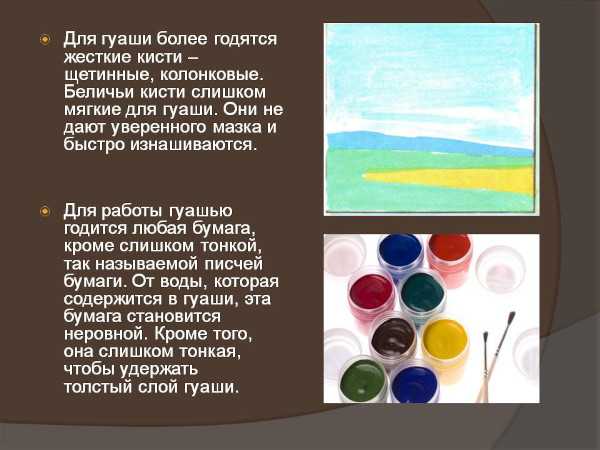
- If you need bright and saturated colors for creating large-format works, then posters can be a good choice.
- For professional work, artist paints would be a more suitable option.
- If you plan to use your work outdoors, acrylics will provide additional stability.
Acrylic
Painting paints, the types of which include acrylics, are widely used in painting, design and other areas where the creation of bright and durable images is required.
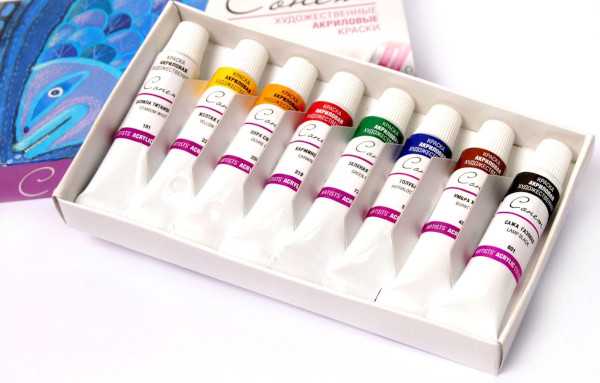
These are synthetic paints based on acrylic resin. They are a universal and affordable material for drawing. They are suitable for beginners and professionals, as well as for various techniques and styles.
Compound
The main components of acrylic paints are:
| Component name | Brief description |
| Acrylic resin | a synthetic polymer that provides strength and durability to the paint |
| Pigment | can be organic or inorganic |
| Solvent | water is usually used |
| Thickener | a substance that makes paint thicker and easier to apply |
Properties
| Properties | Description and features |
| dries quickly and forms a strong film that does not dissolve in water | This allows them to be used to create images on a variety of surfaces, including:
|
| have high lightfastness and brightness | Allows you to create rich and expressive colors that do not fade over time. |
| Suitable for various painting techniques, including brushstrokes, glazing, blending | They can be used either in pure form or mixed with other paints. |
| easy to apply and mix | They dry quickly, allowing you to create images quickly. |
Types
There are many types of acrylic paints that vary in color, transparency, gloss, consistency and other properties.
Thick
These paints have a thicker consistency than liquid ones. They are used to create thicker layers of paint and to imitate different textures. Thick paints are suitable for working with large and voluminous objects.
Liquid
This is the most common type of acrylic paint. They have a liquid consistency and are easy to apply to the surface. They are suitable for creating fine and detailed works.
Glossy
These paints have a glossy shine and reflect light. They are suitable for creating bright and expressive images.
Matte
These paints have a matte shade and do not reflect light. They are suitable for creating calm and restrained images.
Shiny
These are paints that contain special pigments that give them shine. Glitter paints are used to create decorative works and effects.
Fluorescent
These paints glow in the dark. They are suitable for creating original and unusual images.
Mother of pearl
These paints have a pearlescent shine and shimmer in different colors. They are suitable for creating decorative images.
Which ones to choose?
- For fine and detailed work, liquid paints are suitable.
- When working with large and voluminous objects, thick ones are needed.
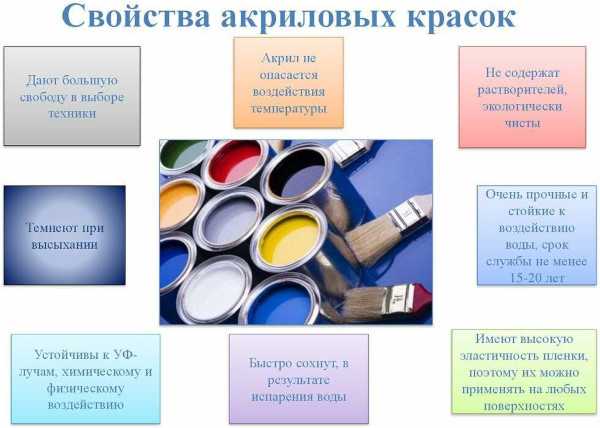
- For decorative work and effects, use shiny ones.
- Quality paints should have good color saturation and resistance to fading.
Oily
Paints for drawing, the types of which include oil paints, can be used both in pure form and in combination with other types.
Compound
The base is oil - the most common is linseed oil. It gives the paints plasticity and promotes uniform distribution of pigment over the surface of the canvas or other material.
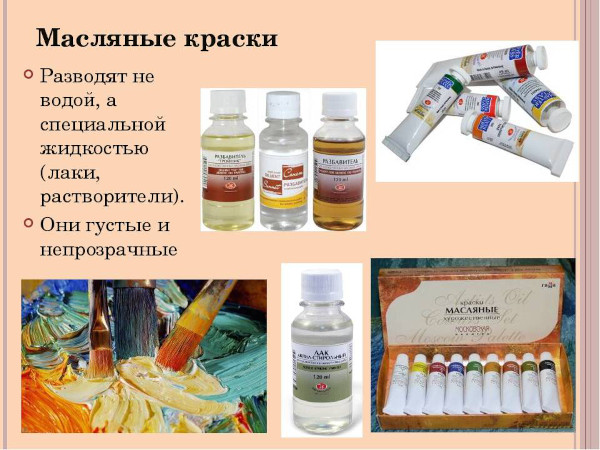
The following oils are also used:
- safflower;
- nutty;
- sunflower;
- poppy.
Properties
- They have bright and saturated colors, a long shelf life and allow you to create durable and long-lasting paintings.
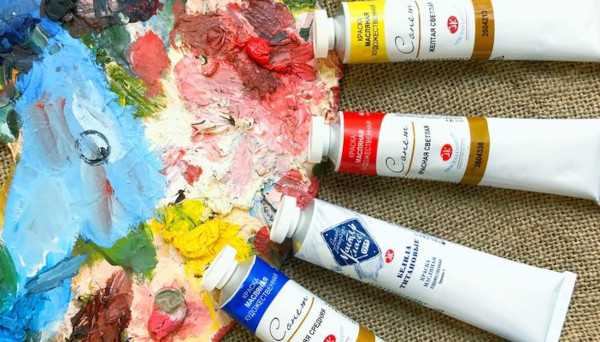
- Slow drying. This allows the artist to work on details more thoroughly and create smooth transitions from one shade to another. However, long drying can also be a disadvantage, especially in cases where the work needs to be completed quickly.
Which ones to choose?
Artists must pay attention to several factors:
| Name of the factor | Brief description |
| paint density | it must correspond to the purpose of the work |
| paint quality and its lightfastness | the higher the lightfastness, the longer the brightness and saturation of the color will be preserved |
| colors | each manufacturer offers its own color palette |
Tempera
This is a type of artistic paint that has been known since ancient times and is widely used in graphics.
Properties
- They have a good ability to cover the base color, which allows you to create rich and bright images.
- They have good lightfastness, which allows them to maintain brightness and color saturation for a long time.
- They dry quickly, allowing the artist to work quickly and efficiently.

Advantages:
- Suitable for various drawing techniques.
- Easy to mix and apply to the surface.
- They retain brightness and color saturation for a long time.
Flaws:
- Difficult to fix once dry.
- It is necessary to use special solvents to correct the work.
Types
Studying the main types of tempera paints will help you choose the right option.
Casein-oil
They are made on the basis of casein, a protein obtained from milk. Casein is mixed with oil and other components to obtain paint with certain properties. The paints have a thick consistency and lie well on the surface. They are suitable for creating dense and saturated shades.
Polyvinyl acetate (PVA)
These are modern paints that are made on the basis of polyvinyl acetate. They have a more liquid consistency than casein-oil paints and dry faster.
PVA are suitable for creating thin and transparent layers, as well as for working with the watercolor technique. They can also be used to create decorative effects, such as glazing.
Acrylic
They are made on the basis of acrylic resin. They dry quickly, do not spread and do not fade over time. They are also resistant to moisture and can be used to work on various surfaces.
Wax-oil
These are paints that are made on the basis of wax and oil. They have a thick consistency and lie well on the surface. Wax-oil paints are suitable for creating dense and saturated shades, as well as for working in the impasto technique. They can also be used to create relief effects.
How to choose
- Natural pigments in tempera paints are more expensive, but they have higher lightfastness. Synthetic pigments are cheaper, but they are less lightfast.

- If you need thick paints to create dense layers, then you should choose casein-oil or wax-oil. As more liquid paints for creating thin layers, you should choose PVA or acrylic.
- If you want the paint to dry quickly, choose acrylic or PVA. And for the opposite effect, casein-oil or wax-oil are suitable.
Finger
Paints for drawing, the types of which can be used for children, are finger paints. These are special paints intended for children's creativity. They have a thick consistency and do not require the use of additional tools, such as brushes.
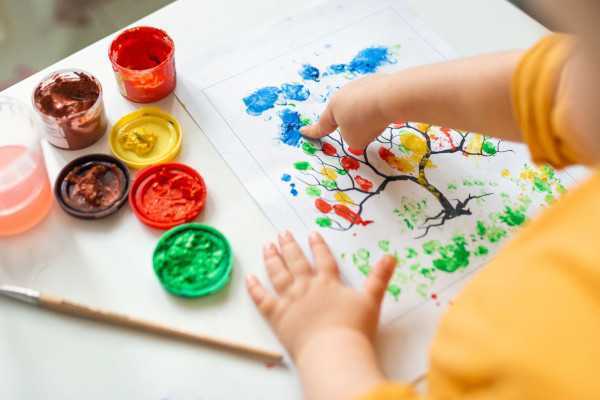
The composition varies depending on the manufacturer. However, in most cases they contain safe food colorings, thickeners and preservatives.
Properties
They are easily washed off hands and clothes, do not contain harmful substances and have bright colours.
The advantages include:
- safety;
- availability;
- ease of use (does not require special skills and is suitable for children of any age).
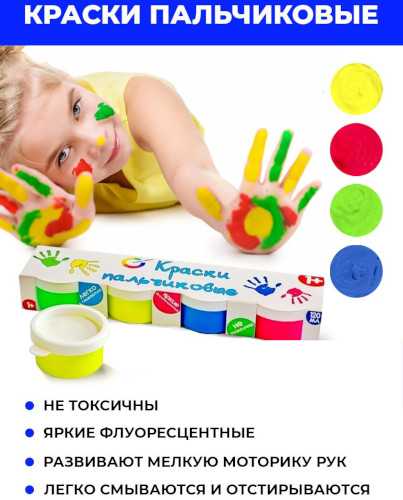
However, finger paints also have their disadvantages:
- may leave marks on surfaces, so it is necessary to use special drawing surfaces;
- may not be very convenient for creating complex designs.
How to choose
- Pay attention to their composition, expiration date and manufacturer.
- For younger children, it is better to choose paints with a thicker consistency, and for older children - with a more liquid one.
Stained glass
These are special paints intended for creating stained glass and glass painting. They are used to create decorative glass elements such as stained glass, mosaics, and paintings.
Properties
They have special properties:
- retain color brightness and do not fade under the influence of sunlight;
- resistant to moisture so that they do not wash off when washing glass;
- adhere well to the glass surface, do not peel off or crumble;
- dry quickly so that the next layer can be applied.

Advantages:
- available in a wide range of colours;
- easy to apply to glass with a brush or other tools;
- When used correctly, they can maintain color brightness and coating strength for a long time.
Flaws:
- may be more expensive than regular paints;
- designed for working with glass, not always suitable for other surfaces.
Types
Paints for painting on stained glass are divided into several types, which differ in composition, properties and method of application.
Acrylic
This is the most common type of stained glass paint. They are made on the basis of acrylic resin and have a wide range of colors and shades.
They have a number of advantages:
- dry quickly;
- have a bright and rich color;
- resistant to moisture and ultraviolet rays;
- easy to apply to the surface.
In addition to glass, they are suitable for creating stained glass on glass, plastic, and metal.
Alcoholic
They are made on the basis of alcohol and have a number of features:
- dry quickly;
- bright and saturated;
- have high lightfastness;
- suitable for creating stained glass on thin and fragile materials.
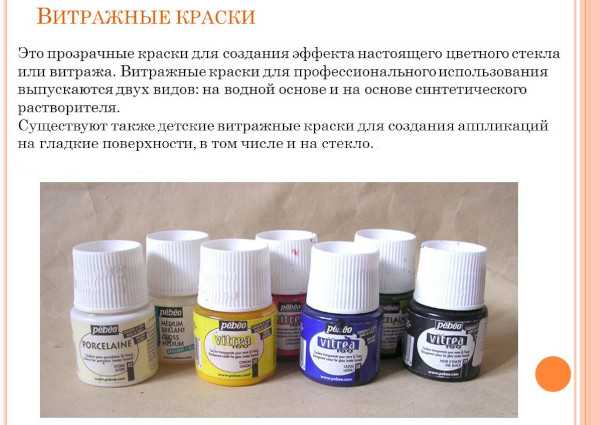
Also suitable for paper, cardboard, fabric.
Water based
They are made on the basis of water and have a number of advantages:
- have no smell;
- safe for health;
- are easily washed off surfaces.
Suitable for drawing on:
- glass;
- plastic;
- metal;
- paper;
- cardboard and other materials.
Lacquered
They are made on the basis of varnish and have a number of features:
- form a durable and moisture-resistant coating;
- have a glossy or matte effect.
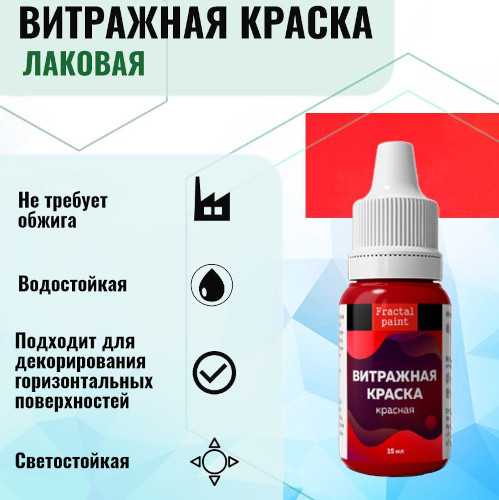
Are suitable for:
- glass;
- plastic;
- metal;
- wood and other materials.
Enamel
They are made on the basis of enamel and have a number of advantages:
- not afraid of humidity;
- have brightness and color saturation.
They can be used to draw on:
- glass;
- plastic;
- metal;
- tree;
- paper and other materials.
Based on epoxy resin
These are strong and durable paints. They are made on the basis of epoxy resin and hardener and have a thick consistency. Epoxy paints are suitable for creating complex and volumetric stained glass, for working with glass, ceramics, metal.
Based on silicate glue
These are paints that are made on the basis of liquid glass. They have high strength and resistance to moisture. Silicate paints are suitable for creating stained glass windows that will be used in rooms with high humidity. They are used on glass, metal and other surfaces.
How to choose
When choosing stained glass paints, the following factors should be taken into account:
- The type of surface to which the paints will be applied. For example, acrylic and epoxy paints are suitable for glass, and epoxy and silicate paints are suitable for metal.
- Strength and durability.
- Color and shade.
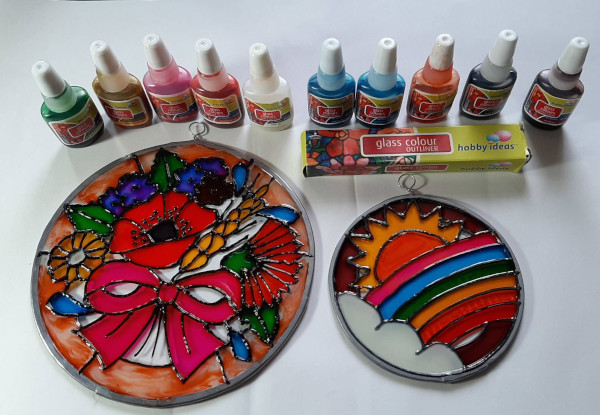
- For a shimmering and shiny effect, use glossy paints.
- There are special technologies for making stained glass that use paints that imitate the effect of antiquity or precious stones.
- You need to choose paints from well-known manufacturers.
By packaging form
Paints for drawing, the types may vary depending on the form of packaging, can be divided into several categories:
| Name of the packaging form | Brief description | Examples |
| in ditches | Cuvettes are small plastic or metal containers with a flat bottom and sides. Paints in cuvettes are usually used for drawing and painting. They are easy to use and allow precise control over the amount of paint applied to a surface. |
|
| in tubes | Tubes are plastic or metal containers with a narrow neck. Paints in tubes are commonly used for drawing, writing, and decorating. They are convenient to use and allow you to easily control the amount of paint squeezed out of the tube. |
|
| in banks | Cans are plastic or metal containers with a wide neck. Paints in cans are usually used for painting large surfaces. They are convenient to use and allow you to quickly and easily apply paint to a surface. |
|
| in the form of a spray | Spray paints are pressurized in an aerosol can. They are used to quickly and easily paint large surfaces. They are easy to use, but may be less precise than paints in tubes or cans. |
|
By appointment
Professional paints are suitable for creating high-quality works of art, semi-professional paints are for the intermediate level, and beginner level paints are for learning and experimenting.
Professional
These are high-quality materials. They have high lightfastness, brightness and color saturation. Professional paints can be oil, watercolor and others.
Semi-professional (academic)
These are medium quality materials. They have good lightfastness and color brightness. Semi-professional paints can be acrylic, oil and others.
Entry level
These are inexpensive materials. They have low lightfastness and color brightness. Entry-level paints can be watercolor, gouache, and others.
On the surface
There are many types of paints that are designed for different surfaces.
For paper
They are usually water-based and contain pigments that adhere well to the surface of the paper. They can be watercolor, gouache, oil, and others.
For canvas
Most often, oil paints are used, which allow you to create rich and deep colors, and also have good durability. You can also use acrylic or tempera. Recently, more and more paintings painted with gouache have appeared.
For wood
Paints based on alkyd resins are used, which provide good adhesion to the wood surface and protection from moisture. There are also special paints for wood, which can be transparent or opaque. Acrylic or oil are good choices.
For glass
Paints based on organic solvents are used, which allow creating bright and saturated colours.

They can be matte or glossy. For glass, stained glass paints or acrylic are best.
For ceramics
Paints that are highly heat-resistant and allow for a variety of effects are used. They can be glossy or matte. Acrylic is best.
For metal
Paints are used that contain anti-corrosion additives and allow protecting metal from rust. They can be alkyd, epoxy or others.
For concrete
Paints are used that have good adhesion to the concrete surface and protect it from moisture and other impacts. They can be acrylic in spray cans, epoxy or others.
For fabrics
Paints are used that allow you to create bright and saturated colors on textile materials. They can be acrylic or others.
For plastic, leather and rubber
They can be based on organic solvents, aqueous dispersions or powder materials:
| Name | Brief description |
| Paints based on organic solvents | Contain volatile substances that evaporate when dry. They provide fast drying and good adhesion to the surface, but can have a strong odor and be toxic. |
| Water dispersions | Contain pigments and fillers dispersed in water. They are environmentally friendly, odorless, and dry quickly. However, they may be less resistant to external influences. |
| Powder paints | They are applied to the surface in the form of powder, which is then melted at high temperature. They provide high resistance to external influences and durability of the coating, but require special equipment for application. |
For water
There are paints that are used to create decorative effects on the water surface. They can be fluorescent, pearlescent or others. This technique is called ebru.
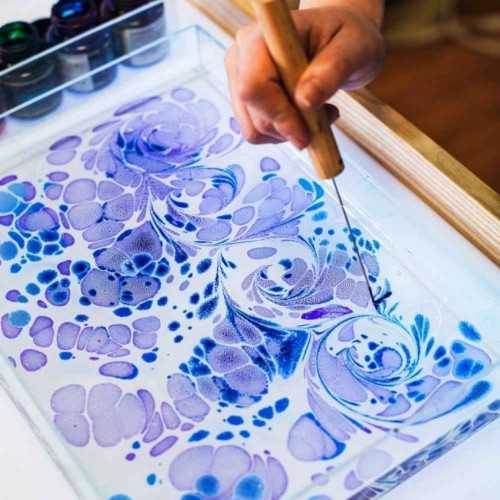
Each type of paint has its own characteristics that determine its application and technique of work. The choice depends on the desired effect, the style of the drawing and the artist's preferences.
Video about paints for drawing
Differences in paints:
